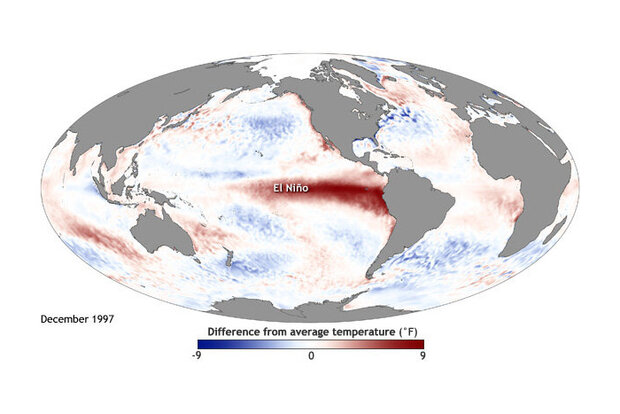How will a warming world impact El Niño?
This map shows sea surface temperature anomalies during El Niño conditions in late 1997. Credit: NOAA Climate.gov

This map shows sea surface temperature anomalies during El Niño conditions in late 1997. Credit: NOAA Climate.gov
The El Niño Southern Oscillation (ENSO) is a periodic fluctuation in sea surface temperature (El Niño/La Niña) and the pressure pattern of the overlying atmosphere (Southern Oscillation) across the equatorial Pacific Ocean. Through its atmospheric teleconnections, ENSO is also the major source of seasonal predictability and driver of global climate and extreme events. Future changes in the seasonal evolution of ENSO during its onset and decay phases have received little attention by the research community. Due to its global impact, it’s imperative that these changes be better understood.
In a new Nature Communications article, authors Hosmay Lopez, Sang-Ki Lee, Dongmin Kim, Andrew T. Wittenberg, and Sang-Wook Yeh examines a large suite of climate models driven by historical and projected future warming—in order to better understand potential future changes in El Niño’s onset, decay, and remote impacts.
The study reveals that projected future warming will result in El Niño events that grow at a faster rate, persist longer over the eastern and far eastern Pacific, and have stronger and distinct remote impacts via teleconnections.
Read more at the link below.